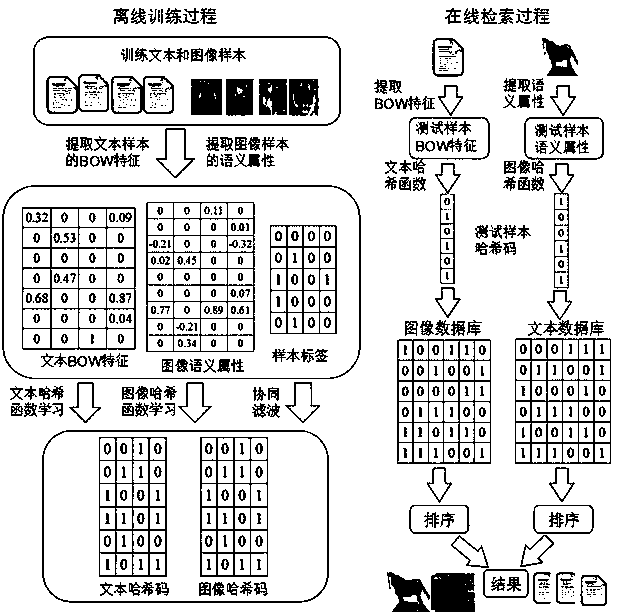Discrete supervision cross-modal hashing retrieval method based on semantic alignment
A cross-modal and modal technology, applied in the field of discrete supervised cross-modal hash retrieval based on semantic alignment, which can solve problems such as algorithm performance degradation
- Summary
- Abstract
- Description
- Claims
- Application Information
AI Technical Summary
Problems solved by technology
Method used
Image
Examples
specific Embodiment approach
[0050] The specific embodiment: the specific embodiment of the present invention is described in detail again below:
[0051] The data set of the present invention is divided into a training set and a test set, the training set is used to train the hash functions of each modality, and the test set is used to test the performance of the algorithm;
[0052] see figure 1 , a discrete-supervised cross-modal hash retrieval method based on semantic alignment, characterized in that it consists of two parts: an offline training process and an online retrieval process; the offline training process includes extracting the BOW feature of the text modal sample in the training set, extracting Semantic attributes of the image modality samples in the training set and the learning of the hash function; the online retrieval process first utilizes the BOW algorithm or CNN to extract the features of the text modality samples in the test set or the semantic attribute representation of the image m...
PUM
 Login to View More
Login to View More Abstract
Description
Claims
Application Information
 Login to View More
Login to View More - R&D
- Intellectual Property
- Life Sciences
- Materials
- Tech Scout
- Unparalleled Data Quality
- Higher Quality Content
- 60% Fewer Hallucinations
Browse by: Latest US Patents, China's latest patents, Technical Efficacy Thesaurus, Application Domain, Technology Topic, Popular Technical Reports.
© 2025 PatSnap. All rights reserved.Legal|Privacy policy|Modern Slavery Act Transparency Statement|Sitemap|About US| Contact US: help@patsnap.com



